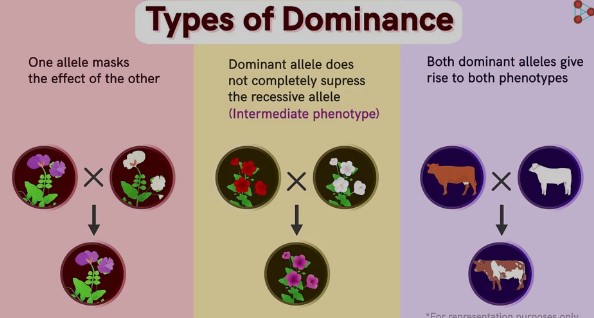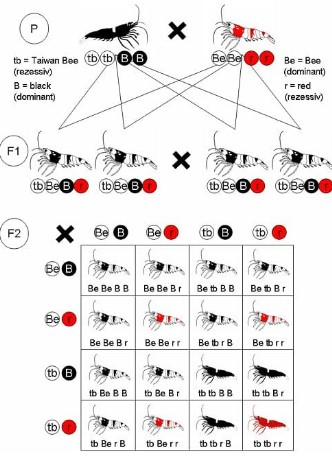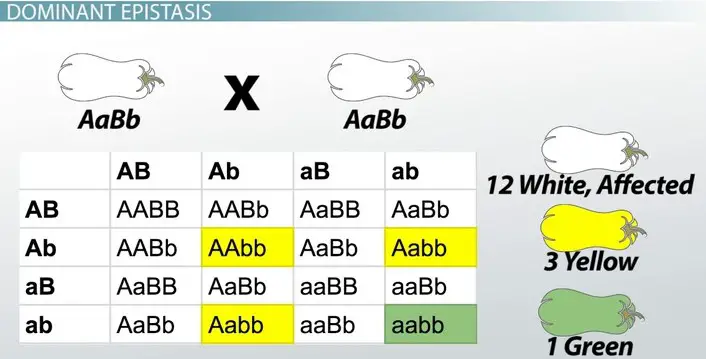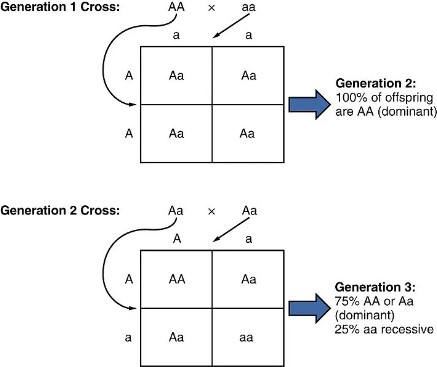When it comes to genetics, understanding the difference between dominance and epistasis can be confusing. This blog post explains what dominance and epistasis are, and how they differ from one another.
We will also explore how the two concepts can interact to create a more complex phenotype. Finally, we will discuss the implications of understanding the differences between dominance and epistasis for animal and plant breeding.
Types of dominance

The concept of dominance is an important building block of genetics, but there is often confusion between dominance and epistasis. Dominance is when one allele has a greater effect than another at the same gene locus, while epistasis is when one gene affects the expression of another gene. In other words, dominance is the effect of one gene on another at the same locus, while epistasis is the effect of one gene on another at a different locus.
Put simply, dominance is the effect of one gene on another at the same locus, while epistasis is the effect of one gene on another at a different locus. To further illustrate this difference, dominance can be thought of as a single gene controlling the phenotype, while epistasis is two or more genes interacting to create a phenotype.
Types of epistasis

Epistasis is a fascinating concept in genetics that can be used to explain how different alleles interact with one another to produce different phenotypes. It can be thought of as a type of gene interaction where one gene’s expression affects the expression of another gene.
Dominance is where one allele is expressed while the other is not, while epistasis is where an interaction between two alleles results in a different phenotype than would have occurred if either allele was expressed alone. In other words, dominance is a single-gene phenomenon while epistasis is a two-gene phenomenon.
Examples of dominance and epistasis

Dominance and epistasis are two important concepts in genetics. While they are both related to how different alleles interact, there is a distinct difference between the two. Dominance describes how one allele can overpower another in a gene, while epistasis occurs when one gene affects the expression of another gene.
For example, when two alleles of a gene are both expressed, the one that is dominant will be the one that is seen in the phenotype. On the other hand, when one gene affects the expression of another, it is known as epistasis.
This means that the effect of one gene will be seen in the phenotype of another gene.
Impact of dominance and epistasis on genetic variation
Dominance and epistasis are two key concepts in genetics that play an important role in the level of genetic variation seen in a population. Dominance describes the relationship between alleles of a gene, where one allele is expressed more than the other. Epistasis, on the other hand, is the phenomenon where the effect of one gene is modified or overridden by the effect of another gene.
Epistasis, on the other hand, is the phenomenon where the effect of one gene is modified or overridden by the effect of another gene. While both dominance and epistasis have an impact on genetic variation, they have different effects. Dominance affects the level of variation seen within a gene, while epistasis affects the level of variation seen between genes.
As such, the relationship between dominance and epistasis is an important factor in understanding the overall level of genetic variation in a population.
Pros and cons of dominance and epistasis
The difference between dominance and epistasis can be a difficult concept to grasp, and it’s important to understand the pros and cons of each. Dominance is the phenomenon in which a gene is expressed over another gene, while epistasis is the interaction of two or more genes that results in a different phenotype than would be expected from the contribution of each gene alone. Both dominance and epistasis have unique advantages and disadvantages, and both play an important role in genetics.
Both dominance and epistasis have unique advantages and disadvantages, and both play an important role in genetics. Dominance is a straightforward concept and can be easier to visualize, but it can result in a lack of diversity in the gene pool. On the other hand, epistasis is more complex and can lead to a greater diversity of genes, but it can be more difficult to observe and understand.
Ultimately, both dominance and epistasis can be beneficial in understanding the genetic makeup of a population.
Bottom Line
In conclusion, the difference between dominance and epistasis is that dominance is the phenomenon of one allele of a gene masking the effects of another allele in a heterozygous genotype, while epistasis occurs when the effects of one gene are modified by the effects of one or more other genes. Dominance is an example of a gene-gene interaction, while epistasis is a more complex gene-gene interaction. Both can have a significant effect on the phenotype of an organism and the overall genetic makeup of a population, and so both should be taken into account when considering the genetic makeup of a species.
Both can have a significant effect on the phenotype of an organism and the overall genetic makeup of a population, and so both should be taken into account when considering the genetic makeup of a species.

